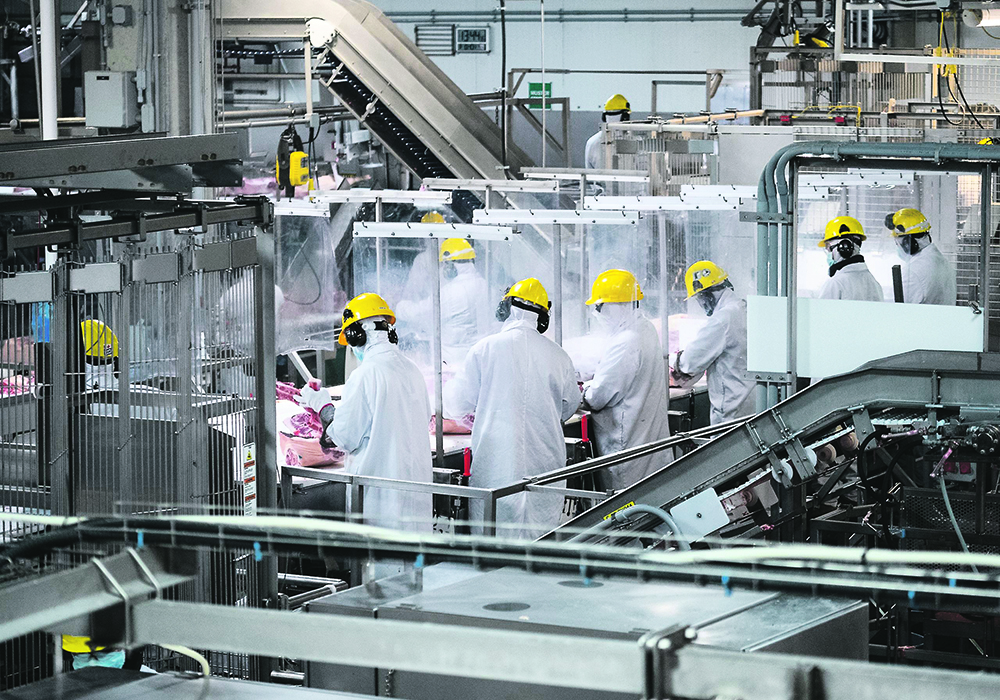Sector benefited from government’s willingness to keep borders open and declare food industries an ‘essential’ service
Canada’s food processing industry has come through the pandemic better than many feared.
But the long-term impact is too early to assess and the future shape of the industry impossible to tell.
“The overall effect of the actions taken by food processing firms depends on whether the restructuring of production activities is productivity-accelerating or productivity-decelerating,” writes agricultural economist Getu Hailu of the University of Guelph in an article in the Canadian Journal of Agricultural Economics.
The results of Year One of the COVID-19 pandemic have been much less dire for Canada’s food processors than many feared. Borders were generally not shut to food trade, outbreaks at processing plants were quickly managed and processing companies showed an ability to innovate and be flexible in response to the pandemic’s shocks.
Read Also

Soybean market still figuring out implications of China-U.S. pact
Soybean futures had a muted reaction to the U.S. trade deal with China as the market tries to figure out the nuances of the deal.
However, there are different ways of innovating and being flexible. Some require increased investment and can improve production capacity, including replacing workers with automation. Others involve cuts to spending, workforce reduction, and gaining efficiency through a lower cost of production.
Those two approaches can both show up in labour productivity, a key measure of how well a firm is employing its assets. It is also something that generally improves during economic tough times as managers become focused on margins and efficiency.
“As food processors face pressures because of the pandemic shocks, they are likely to pursue actions that will save costs or increase non-allocative efficiency by, for example, investing in preventive and corrective maintenance to identifying waste and bottlenecks within their facilities’ operations,” says Hailu in COVID-19 and Food Processing in Canada, published April 28.
“Whether there was a gain in (cost minimization that increases labour productivity) and the extent of the gain during the pandemic are, however, open empirical questions.”
The degree to which Canada’s food processors boosted efficiency and capacity via new investments versus boosting efficiency by cutting costs and reducing spending isn’t easy to see until the post-pandemic world has time to arise.
Like a number of analysts, Hailu is skeptical of predictions that the future will contain more smaller meat processing plants as a response to the shutdowns of plants like Cargill’s High River beef slaughter plant and the perception that it’s dangerous for Canada to rely upon a handful of mega-plants. Big plants might have fallen short of their capacity limits this year due to pandemic problems but developing small plants to compensate might not make economic sense. The per-unit cost of smaller plants suggests they would need to find specialty markets for their products rather than supply the global bulk beef market.
“To remain competitive in the global market, the industry has to either supply to niche international markets through a product differentiation strategy or achieve cost leadership through economies of scale,” says Hailu.
Automation may be embraced to reduce today’s reliance on huge numbers of low-skilled workers, but it might not just be a simple case of swapping out people for machines.
“Recognizing the potential loss of jobs and that meat packing is a very difficult task to automate, another option is to enhance the productivity of the processing facilities through the adoption of process innovations that allow for physical distancing while reducing the need for a large number of production workers,” said Hailu.
“Automation may have the added benefit of creating higher paying quality jobs.”
Hailu notes the importance of a plethora of government programs, but says it is too early to assess how those will affect the future shape of the industry.
Of decisive importance were governments’ commitment to keeping borders open, and to declaring food industries to be “essential” and able to operate as normally as possible.
With the pandemic perhaps winding down in the most advanced countries, Hailu notes that the worldwide pandemic still afflicts much of the world and global marketplace and won’t stop being a factor and influence until it is under control around the planet.
















